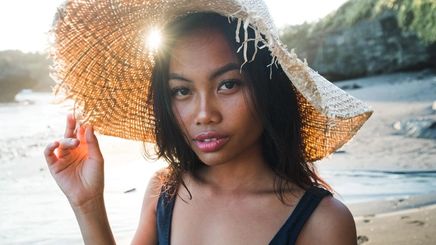
The term "Asian" encompasses a wide range of ethnicities and cultures, including East Asians, South Asians, Southeast Asians, and more. Yet, despite the rich diversity within the Asian community, harmful stereotypes about what an "Asian face" looks like persist. Newsflash: Hoyeon Jung, Nadine Lustre, and Priyanka Chopra are all Asians, and they couldn’t be more different appearance-wise.
From the assumption that all Asians have almond-shaped eyes to the belief that we all have “yellow skin,” these myths erase individuality and fail to represent different cultures. This article debunks some of the most pervasive myths about the Asian face and shows there's no one definition of Asian beauty.
Myth #1:Asians Have Small Faces
It’s a common misconception that all Asians have small faces. You can’t blame people for believing so – look how tiny Blackpink looked at Coachella! Jokes aside, most Asians in the limelight do have smaller faces. This may be attributed to the and how East Asians (the most represented Asian segment in Hollywood) generally view slim, .
The fact is, with more defined features, like deep-set eyes, while some Southeast Asians can have rounder faces with more volume. The “Asian face” comes in a wide range of proportions. Besides, various factors contribute to face size – not just race. These include your genes and lifestyle. Extra rice, anyone?
Myth #2:Asians Have Small Eyes
The generalization that all Asians have “chinky” eyes is racist. To this day, slanted-eye gestures are still used to describe, if not make fun of, Asians. It’s not only offensive, but it’s also inaccurate. Asians with big eyes do exist.
Asian eyes come in different shapes and sizes. The so-called almond-shaped eyes are most common among Koreans, Japanese, and Chinese. However, they can also have big, round eyes and still look distinctly Asian. One distinct feature is not the size of the eyes, but rather the , specifically, the extra fold in the inner corner of the eyes.
Myth #3:Asians Have Yellow Skin
The origin of the notion that Asians have yellow skin may go as far back as 1895 when the term “yellow peril” became prevalent. While there’s nothing perilous about having yellow skin (unless you have liver issues – please visit a doctor), the truth is, Asian skin tones come in various shades, including olive, brown, and pale beige.
Countries like Singapore and the Philippines are home to Asians of mixed ethnicities. Every Filipina knows that she can have a completely from her bestie, who may have Spanish blood or be of Malay descent. Meanwhile, chinitas can have yellow undertones while most Filipinas are
Myth #4:The Asian Face Is Flat
The myth that Asian faces are flat continues to prevail because of a lack of representation. Most Asians in mainstream media are from the East, where are common. According to the Journal of Aesthetic Plastic Surgery, this is usually characterized by a shorter and wider surface area with minimal brow, nasal, and chin projection.
However, if you look at South Asia, which is composed of eight countries, you’ll find a variety of facial profiles. In North India, for example, most women would have longer faces and noses, while South Indians, can have higher cheekbones, fuller lips, and more buccal fat, notes the Journal of Clinical and Aesthetic Dermatology.
Meanwhile, in the Philippines, women can have a mestiza nose, which has a higher bridge and a rounder tip, which counters a flat facial profile. The Filipino-Chinese, which make up 1.8% of the population, can have smaller noses with wider nostrils and a flat side profile.
Your “Asian face” may be less likely to #raisin, but this doesn’t mean you can do away with a proper skincare routine. Cleanse your skin daily with Dove Facial Cleansing Mousse Moisture Care, which has 40% Active-boost Serum and hyaluronic acid to leave your skin youthful, radiant, and moisturized for up to 24 hours. And because UV rays are everywhere, apply POND'S UV Bright Sunscreen to protect your skin from sagging, wrinkles, and dark spots.
The bottom line is, there’s no such thing as an “Asian face.” The continent consists of 51 countries spread across 30% of the world’s livable surface. To think everyone in it would look alike is not only naïve but also decidedly ignorant. Just like anywhere else, Asians come in all colors, shapes, and appearances – all of them beautiful.